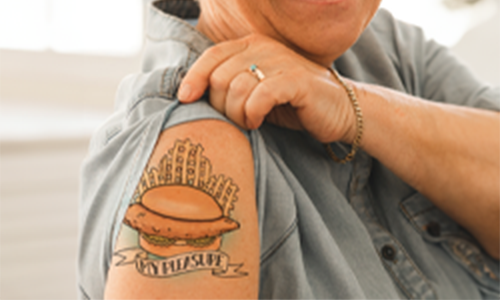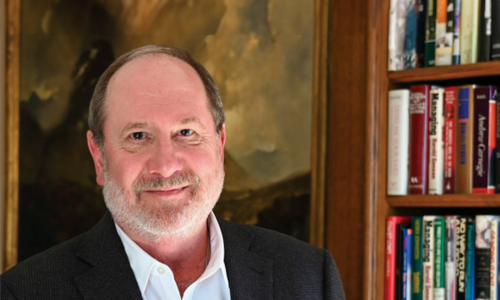 Dr. Tej Singh completed his medical school education at the Pritzker School of Medicine
at the University of Chicago. He did his surgical residency at Stanford University
Medical Center and received his MBA through the Physicians Executive MBA program at
Harbert. In addition to being a preeminent Silicon Valley vascular/endovascular surgeon,
Dr. Singh is an inventor, entrepreneur and CEO/Founder of Fist Assist Devices, LLC.
Dr. Tej Singh completed his medical school education at the Pritzker School of Medicine
at the University of Chicago. He did his surgical residency at Stanford University
Medical Center and received his MBA through the Physicians Executive MBA program at
Harbert. In addition to being a preeminent Silicon Valley vascular/endovascular surgeon,
Dr. Singh is an inventor, entrepreneur and CEO/Founder of Fist Assist Devices, LLC.
Taking over the work of failing kidneys, a dialysis machine filters out toxins from
the blood in people who have end-stage renal or chronic kidney disease. At an annual
cost of $42 billion, over 400,000 patients receivedialysis and 150,000 new patients
start dialysis yearly in the US alone. To undergo dialysis, patients must first have
a vascular surgical procedure that creates an access point for the machine—an arterio-venous
fistula. Dr. Singh has designed a novel, non-invasive, low-cost device that significantly
improves the preparation, development, and maturation of that access point.
Harbert Magazine: When did you get the idea for the device?
Dr. Singh: I was lucky to be doing basic science research as an undergraduate at the
University of Chicago in 1988. My mentors, Dr. Christopher Zarins and the late Dr.
Seymour Glagov, gave me the opportunity to do animal research on how arteries adapt
to hemodynamic changes. I also realized that veins need to enlarge for blood draws
and dialysis. I thought maybe changes to vein flow and pressure with external pneumatic
compression devices could help dilate veins and be great for patients also. Some of
my initial planning work on vein dilation was done at Akita University in Akita, Japan,
under the advice of Dr. Hirotake Masuda.
HM: Tell us about the process of becoming an entrepreneur.
Dr. Singh: I married a fabulous young lady, Simran Singh, MD (’14, PEMBA) in 1992,
finished medical school in 1993, and left Chicago for Stanford University for my general,
vascular, trauma and endovascular surgical training, which lasted nine years. We had
three young sons when I started my practice, thus developing the device took a back
seat to my young family and my work as a surgeon.
But my father—who was a very successful international businessman—and I always talked
about the idea. In 2008, I was able to get my patent filed and approved and, albeit
slowly, I started planning the company, Fist Assist Devices, LLC.
Raising funds, making prototypes, gathering a team, starting clinical trials, and
going through the regulatory process was a massive learning process. I was still a
full-time vascular surgeon with on-call and clinical duties and it was a very busy
time juggling all the activities.
The key step was joining the Auburn Physicians Executive MBA program in 2011. Initially,
I wanted to increase my skills for a hospital-based leadership position; but [faculty]
Stan Harris, Tom Baker and Amit Mitra helped me see the potential for my device and
focused my attention. Mr. Baker helped with legal advice and Professor Mitra with
the statistical analysis of our first efficacy trial. In 2013, as an LLC with IP and
trademarks, Fist Assist Devices, LLC took off.
HM: Your training as a physician equipped you to understand the medical issues your
product addresses, but how did your business education help you move from concept
to reality?
Dr. Singh: With the Auburn education, I learned about organizations, leadership, finances,
collaboration, emotional intelligence, marketing, statistics, and business law. I
gained a lot of confidence. Tom Baker, and Amit Mitra joined our venture and have
been with us for six years as advisers and partners for specific tasks. Auburn gave
me the tools and the key people to add to my team.
HM: Marketing a new medical device must be a challenge. How have you met it?
Dr. Singh: Yes, marketing a new medical device is no doubt a challenge. Once you
have the team in place and funding to ensure viability, the next step is promotion
of the product and generating acceptance. Change is hard. Not every device makes it.
Sometimes, complex, costly, invasive, and difficult-to-use devices never make the
market. Luckily, our device is simple, external, wearable, and has support from patients,
nurses, technicians, families, and all types of doctors. Our simple design and our
initial trial results were positive and got us global attention over the past four
years. We have a global device that is very acceptable. The FDA will review our submission
in 2020.
We continue to showcase the device and educate the community about its advantages.
The device is easy to understand and easy to use. The work never ends, but with momentum
and education, we have convinced a lot of people. Having a global team of passionate,
available, accountable, and affable people has made it very enjoyable and has enabled
our progress.
HM: The product is in clinical trials. How has it been received by the community?
Dr. Singh: So far, great. We have cleared regulatory hurdles in India and we will
soon have the CE Mark clearance to sell in the European Union. The device is now selling
in India with our distributors, which is very special to me and my initial angel investors—my
parents and wife. Fist Assist has a great following and a lot of supporters and promoters.
We are confident what started as a simple idea in Hyde Park at the University of Chicago
will help millions who need dialysis care in the world.

 Degrees & Programs
Degrees & Programs
 Faculty & Staff
Faculty & Staff
 Career Development
Career Development
 Recruiters & Industry
Recruiters & Industry
 Dr. Tej Singh completed his medical school education at the Pritzker School of Medicine
at the University of Chicago. He did his surgical residency at Stanford University
Medical Center and received his MBA through the Physicians Executive MBA program at
Harbert. In addition to being a preeminent Silicon Valley vascular/endovascular surgeon,
Dr. Singh is an inventor, entrepreneur and CEO/Founder of Fist Assist Devices, LLC.
Dr. Tej Singh completed his medical school education at the Pritzker School of Medicine
at the University of Chicago. He did his surgical residency at Stanford University
Medical Center and received his MBA through the Physicians Executive MBA program at
Harbert. In addition to being a preeminent Silicon Valley vascular/endovascular surgeon,
Dr. Singh is an inventor, entrepreneur and CEO/Founder of Fist Assist Devices, LLC.

